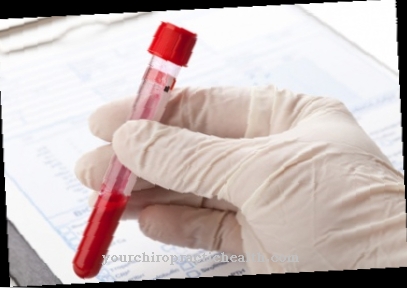The Electrocoagulation is a surgical procedure in HF surgery in which tissue is intentionally damaged and removed using high-frequency electricity. In this context, the procedure can be used on tumors, for example, and at the same time as the incision closes the resulting wound. Electrocoagulation cannot take place in extremely dry tissues.
What is electrocoagulation?

In high-frequency surgery, a team of doctors conducts high-frequency alternating current through the human body. The HF procedure aims to damage or cut tissue in a targeted manner. Tissue structures should be severed or completely removed.
In contrast to the conventional cutting technique, the wound can be closed together with the incision during HF surgery. This stops the bleeding because the vessels in the cut area are closed. The instrument used in HF surgery is the electric scalpel. One of the methods used in this surgical area is electrocoagulation. With electrocoagulation, a single spark is emitted, which burns the tissue in a punctiform manner and thus separates tissue structures from one another.
The fast and at the same time efficient electrocoagulation and the associated hemostasis are mainly used in the context of a lack of spontaneous coagulation, for example with bleeding in connection with tumors. For the rather small vessels, the procedure replaces expensive fibrin glue or ligature. Electrocoagulation thus saves the doctor both effort and money. The patient also benefits from the HF surgery procedure thanks to the immediate hemostasis.
Function, effect & goals
The term coagulation can refer to two different surgical techniques. In addition to deep coagulation, there is also electrical hemostasis in the sense of electrocoagulation. Deep coagulation is also electrocoagulation. The process heats the tissue up to 80 degrees Celsius.
The heating is achieved via electrodes. In addition to ball and plate electrodes, roller electrodes are also used in this context. These instruments are used to remove tissue during the operation. In electrocoagulation in the sense of deep coagulation, a high current density is used. Only current without pulse modulation, i.e. unmodeled current, is used. Doctors use the magnitude of the current to influence the depth of coagulation. When large currents are used, scab forms. This means that the heat cannot spread further into the depths.
When the electrode is later removed, the doctor removes the burned tissue that is still attached to the electrode in the same step. If a small current is used for too long, the tissue around the electrode will boil off. The burns are slightly deeper than the electrode diameter. For electrocoagulation in the sense of a hemostatic procedure, unlike deep coagulation, pulse-modulated HF current is used, which is attached to clamps and tweezers. The tips of the instruments grip the area to be breastfed, which narrows due to dehydration and closes completely at the end.
This coagulation process takes place in bipolar mode. Monopolar forceps are rarely used. In seeping hemorrhages, hemostasis takes place with large electrodes that are operated using pulse-modulated current. Further forms of coagulation are desiccation and fulguration. These are special forms of the process. Fulguration is carried out as superficial coagulation. In this procedure, intra- and extracellular fluids evaporate due to the sparkover from a tip of the electrode, which the doctor guides a few millimeters over the tissue.
Desiccation generally corresponds to this procedure, but with this type of coagulation a needle electrode is inserted into the tissue. Soft coagulation is used for currents below 190 V. These processes do not create sparks or arcs. In this way, unwanted cutting is excluded and carbonization is prevented. In addition, there is forced coagulation, which extends to currents of 2.65 kV and generates arcs for greater coagulation depth. Spray coagulation works with currents of up to 4 kV and thus creates particularly strong and long arcs in order to heat the tissue both exogenously and endogenously.
You can find your medication here
➔ Medicines for paresthesia and circulatory disordersRisks, side effects & dangers
Electrocoagulation has some risks and side effects. As usual, the patient must reckon with the conventional risks and side effects of any operation. These include, for example, unwanted bleeding, circulatory collapse due to the anesthetic, or complications in the neck area that can occur due to the ventilator.
Like any other surgery, electrocoagulation can cause nausea or vomiting from the anesthetic. In addition, more or less severe pain may occur in the treated areas. In addition to the conventional surgical risks, electrocoagulation is associated with some specific risks and complications. This includes, for example, the adhesive effect, which can occur with both soft coagulation and forced coagulation. At higher currents, an unexpectedly high spark cannot be completely ruled out, which in extreme cases injures or even removes unplanned tissue.
However, this risk is negligible as long as the patient is in the hands of professional HF surgeons who perform the procedure several times a day. Electrocoagulation is not possible under certain circumstances. This applies, for example, when the fabric is extremely dry. There is insufficient current flow in dry tissue. For this reason, such tissue cannot be electrocoagulated at all. The doctors must therefore determine exactly how dry the tissue to be treated is before the planned coagulation.













.jpg)

.jpg)
.jpg)











.jpg)